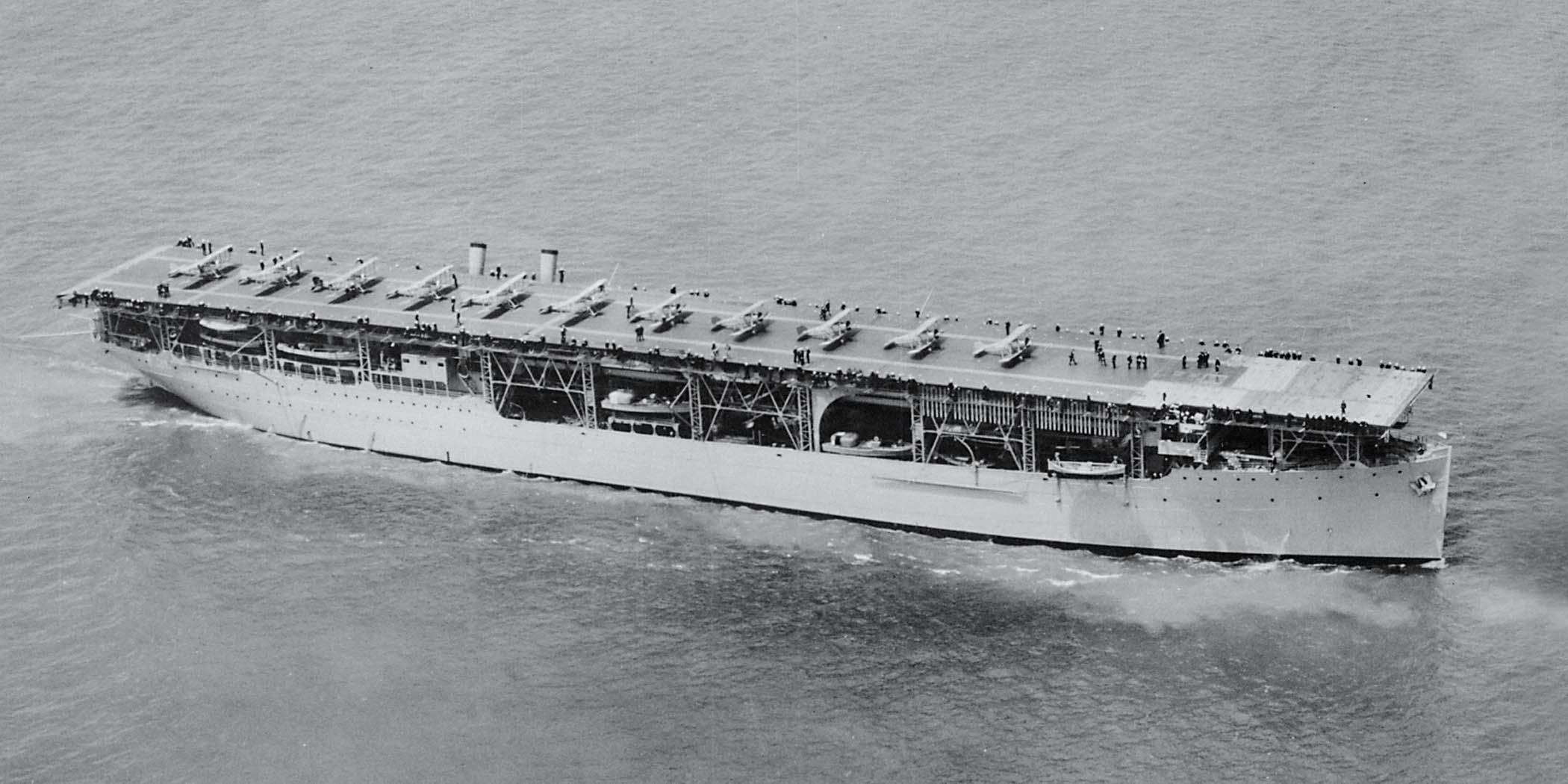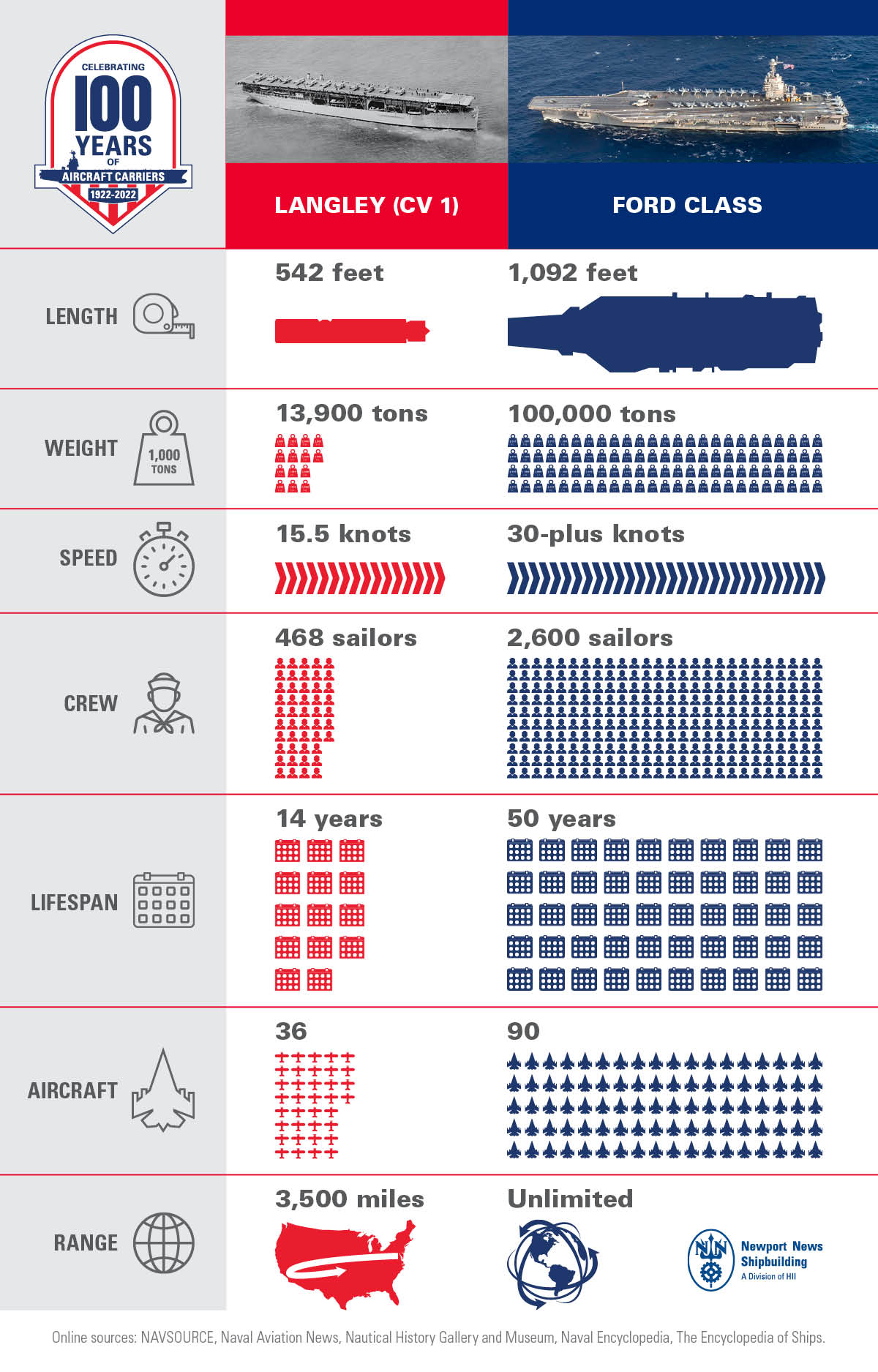
The American Aircraft Carrier turns 100 years old
Published March 18, 2022
Langley (CV 1) occupies a special place in history as the U.S. Navy’s first aircraft carrier, brought into service 100 years ago on March 20, 1922.
The ship wasn’t constructed at Newport News Shipbuilding and bears no resemblance to the nuclear-powered giants that rise from NNS dry docks today. Langley wasn’t even built as an aircraft carrier. It was converted from Jupiter, a coal-carrying ship commissioned in 1913.
After its conversion at Norfolk Naval Shipyard, the ship attracted attention wherever it went and featured modern technology. For example, it retained Jupiter’s turbo-electric propulsion system, the first of its type for a Navy ship.
To commemorate the 100th anniversary of the aircraft carrier, Virginia Sens. Mark R. Warner and Tim Kaine introduced a Senate resolution that pays tribute to Langley while recognizing that aircraft carriers have come a long way in 100 years.
Today’s Ford-class carriers are twice as long and weigh eight times as much as their 1922 counterpart, yet they are twice as fast and carry nearly three times as many aircraft.
NNS and the Navy put considerable effort into developing and deploying new technology for the Ford class. Langley featured its own timely technology: a carrier pigeon house for sending messages. Unfortunately, it never got off the ground.
Because birds had served aboard seaplanes to transport messages, Langley included a carrier pigeon house. The birds were trained at Norfolk Naval Shipyard as the ship readied for deployment. However, they had other ideas about life at sea. When the flock was released during a training mission off Tangier Island, the pigeons flew south and roosted at the Norfolk yard, where they decided to stay.
The ship’s pigeon house was later turned into officer quarters.
Langley served only 14 years as an aircraft carrier before it was converted into a seaplane tender. The ship sustained heavy damage by Japanese bombers in World War II and was scuttled to avoid capture.
